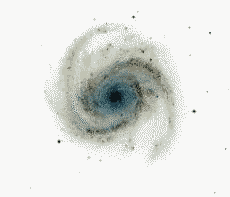ACTPOHOMÈ×ECKOE
|
|
EURO-ASIAN
|
III Ìåæäóíàðîäíàÿ àñòðîíîìè÷åñêàÿ îëèìïèàäà
|
||
Íèæíèé Àðõûç, ÑÀÎ ÐÀÍ |
20 - 27. 10. 1998. |
SAO RAS, Nizhnij Arkhyz |
Ócëoâèÿ çaäaíèé. Problems to solve
Àíãëèéñêèé
English
Text of these problems is available also
in other languages:
Bulgarian,
Danish,
Portuguese
and Russian.
Theoretical round
Group A (juniors, < 16 years old).
1. What can one see in the Moon's sky more often - the Sun or the Earth?
2. In a new postal service a huge cannon shots a postal shell from England to New Zealand. Can you estimate the duration of the shells flight?
3. It is known that the equatorial coordinates of vernal equinox are 0 hr and 0 deg. Which are the North ecliptic pole coordinates?
4. Suppose that the Sun collapsed suddenly to a black hole. How would the orbital period of the Earth be affected?
5. Can we distinguish the lunar Mare Crisium, which diameter is 520 km, by a naked eye?
6. There are about of 250 millions of stars in the elliptical galaxy M32 (a satellite of Andromeda galaxy). The visual magnitude of this galaxy is 9m. If luminosities of all stars are equal, what is the visual magnitude of one star in this galaxy?
Theoretical round
Group B (seniors, > 16 years old).
Text of these problems is available also
in Bulgarian,
Danish,
Portuguese
and Russian.
1. Is it possible to observe solar eclipses, meteors, comets, auroras, rainbows, noctilucent clouds and artificial satellites on the Moon?
2. There are Cepheids variables in our own Galaxy as well as in other galaxies. Why was the "period-luminosity" relation first recognized for Cepheids in the Magellanic Clouds?
3. Because precession, the vernal equinox point moves slowly (50" per year) in the sky. Along what celestial circle does it move - the equator or the ecliptic?
4. Artificial Earth satellite moves with a speed of 6.9 km/sec along the circular equatorial orbit in the direction of the Earth rotation. What is the period of the satellite appearance above any fixed equatorial point?
5. Can we distinguish the lunar Mare Crisium, which diameter is 520 km, by a naked eye?
6. There are about of 250 millions of stars in the elliptical galaxy M32 (a satellite of Andromeda galaxy). The visual magnitude of this galaxy is 9m. If luminosities of all stars are equal, what is the visual magnitude of one star in this galaxy?
Practical round
Both age groups (A and B).
Text of these problems is available also
in Bulgarian,
Danish,
Portuguese
and Russian.
7. The masses of Capella's components.
The 6-meter telescope of SAO is one of a few to carry out speckle-interferometric observations of visual binary stars. The purpose is a direct measurement of stellar masses. You are proposed to estimate the masses of Capella's components, using our observational data.
Capella (Alpha Aur) is a very close visual pair. Fig.1 shows a relative orbit of the component B as observed over many years by observations by different observatories. The points obtained in SAO are marked in red. The position of the component A is marked by a cross and is connected to the periastron point with a straight line. The radial velocity curves of the both components are shown in Fig.2.
Capella's parallax is p = 0".077, the revolution period of its components is P = 104d.
8. A galaxy's mass.
Erge-on spiral galaxies are suitable for the determination of their masses. Prof. I.D.Karachentsev and his colleagues complied a cataloge of such galaxies and obtained their mass spectroscopically. The spectrum of one galaxy, FGC 1908 in Dragon, is given below. It was obtained on the 4-th of March 1997, with the help of a spectrograph installed at the primary focus of the 6-meter telescope. As the figure shows, the spectrograph slit was aligned with the major axis of the galaxy. Vertical lines crossing the spectrum are emission from the night sky. Other emissions belong to the galaxy. Their laboratory wavelengths are indicated. When determining the galaxy's mass at the SAO the Hubble constant was taken to be H = 74 km/(s·Mpc).
You are required to repeat the estimate of the galaxy's mass. Recall that 1 pc = 3.09·1018 cm, the mass of the Sun is MO = 2·1033 g and the gravity constant is G = 6.67·10-8 dyn·cm2/g2.
Observational round
Both age groups (A and B).
Text of these problems is available also
in Bulgarian,
Danish,
Portuguese
and Russian.
9. The Sun in optical and radio range.
With the help of a "school telescope" examine and draw the detailes visible on the disk of the Sun. Orientate the Sun according to the cardinal points.
Identify the details of your picture with the details of one-dimentional radio-sections of the Sun fulfilled in previous days with RATAN-600.
Radio observations were carried out at noon, the knife beam
was directed vertically and covered all disk of the Sun.
10. "The Star-Splitter".
- ...That telescope was christened the Star-Splitter,
Because it didn't do a thing but split
A star in two or three, the way you split
A globule of quicksilver in your hand
With one stroke of your finger in the middle...
With the help of a "school telescope" find in the sky and divide
several (not more than 5)
binaries into components.
Pay attention to the brightness and colours of the components.
Explain the observed relation between the brightness and colors
of the components (fill the table below).
| Object | Colour of main comp. |
Colour of companion |
Explanation of the observed facts (colour, etc.) |
|
| 1 | ||||
| 2 | ||||
| 3 | ||||
| 4 | ||||
| 5 |
© Dr. M.G.Gavrilov, ISSP RAS, Chairman of the Olympic Coordinating Council, 1998.
© Edited for Web-page by Michael G. Gavrilov, ISSP RAS, 1998-2002.

|

|

|

|
